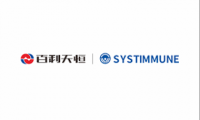-
FDA Approves Expanded Indication for Praluent to Lower LDL-C in Pediatric Patients with HeFH
- Source: drugdu
- 161
- March 13, 2024
-
Boehringer Ingelheim Places €25M Bet on Sosei’s Novel Approach to Schizophrenia
- Source: drugdu
- 161
- March 13, 2024
-
New action to tackle ethnic and other biases in medical devices
- Source: drugdu
- 135
- March 13, 2024
-
Study reveals children with amblyopia are at higher risk of serious disease in adulthood
- Source: drugdu
- 106
- March 13, 2024
-
Rapid AST Platform Provides Targeted Therapeutic Results Days Faster Than Current Standard of Care
- Source: drugdu
- 148
- March 12, 2024
-
FDA Grants Accelerated Approval to Brukinsa Plus Gazyva for Relapsed or Refractory Follicular Lymphoma
- Source: drugdu
- 128
- March 12, 2024
-
How Marketing Fueled the Opioid Overdose Crisis and What We Can Learn From It
- Source: drugdu
- 119
- March 12, 2024
-
MIT study reveals non-invasive treatment holds promise for treating ‘chemo brain’
- Source: drugdu
- 130
- March 12, 2024
your submission has already been received.
OK
Subscribe
Please enter a valid Email address!
Submit
The most relevant industry news & insight will be sent to you every two weeks.












